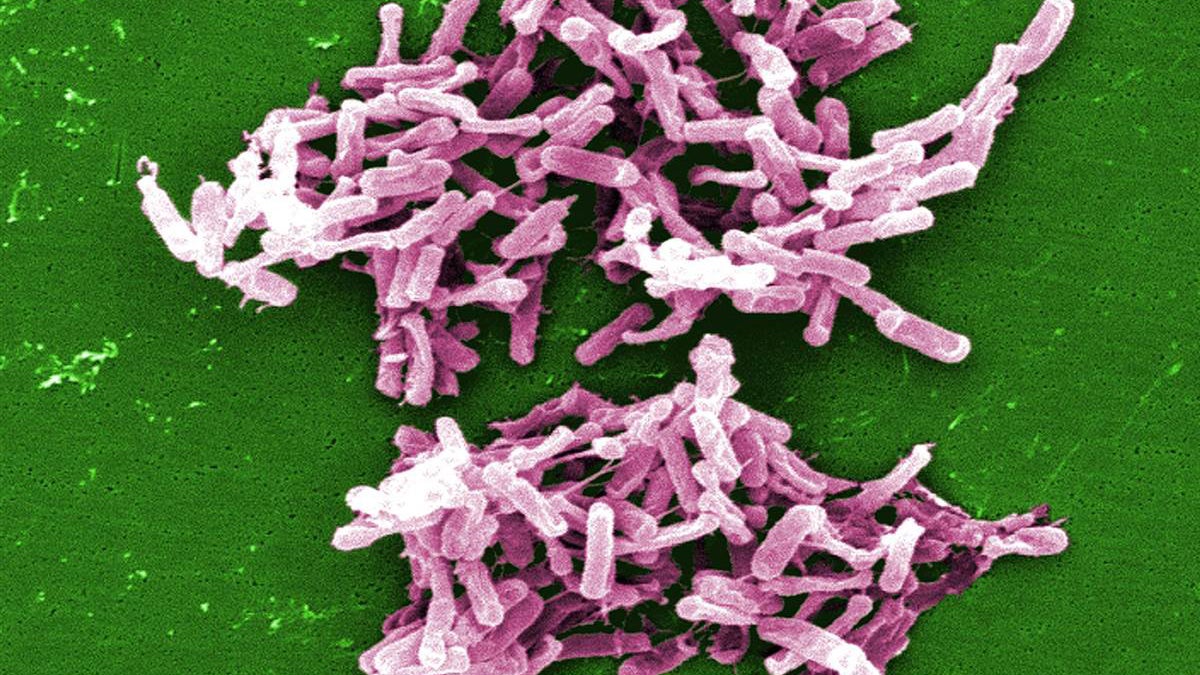With UV rays, Penn hospital cuts C. difficile infections
Listen
This 2004 electron microscope image made available by the Centers for Disease Control and Prevention shows a cluster of Clostridium difficile bacteria. (AP Photo/Centers For Disease Control And Prevention, Lois S. Wiggs, Janice Carr)
It’s all too easy to pick up an infection at the hospital. For patients, especially for those with weakened immune systems, a bug such as Clostridium difficile can be deadly. But researchers at the University of Pennsylvania are finding that a bit of ultraviolet light can go a long way.
C. diff in particular is notoriously hard to get rid of. The bacterium forms spores that survive even thorough cleaning. But they stand much less of a chance after exposure to the purple glow of ultraviolet rays.
“Basically the ultraviolet light disrupts the DNA, or the genetic material, of the bacteria and effectively kills it by making it unable to replicate or to multiply,” said David Pegues, an infectious disease physician and one of the medical directors at the Hospital of the University of Pennsylvania.
His team tested portable UV disinfecting machines on the cancer floor for a year and found that C. diff infection rates fell by 25 percent. During the same time period, the infection rate in other wards not using the technology increased 16 percent. The results were just presented at the annual IDWeek meeting in San Diego.
Other disinfecting devices exist, including ones that use hydrogen peroxide vapor to sterilize rooms. But those need upwards of two hours to work, whereas the UV units clean a single room with two 8-minute sessions.
The cleaning tools, Pegues noted, do not take the place of expert personnel.
“It won’t replace a good old elbow grease and disinfectant,” he said. “But it certainly augments or helps to improve upon performance using those kinds of traditional means.”
The UV machines are expensive and actually require more staff, but Pegues said in the long run the units more than pay for themselves. In the first year, he estimated the hospital saved $150,000 by reducing costs related to infections–and that’s been enough to convince hospital administrators. Since July, the devices have been used throughout the hospital.
WHYY is your source for fact-based, in-depth journalism and information. As a nonprofit organization, we rely on financial support from readers like you. Please give today.

